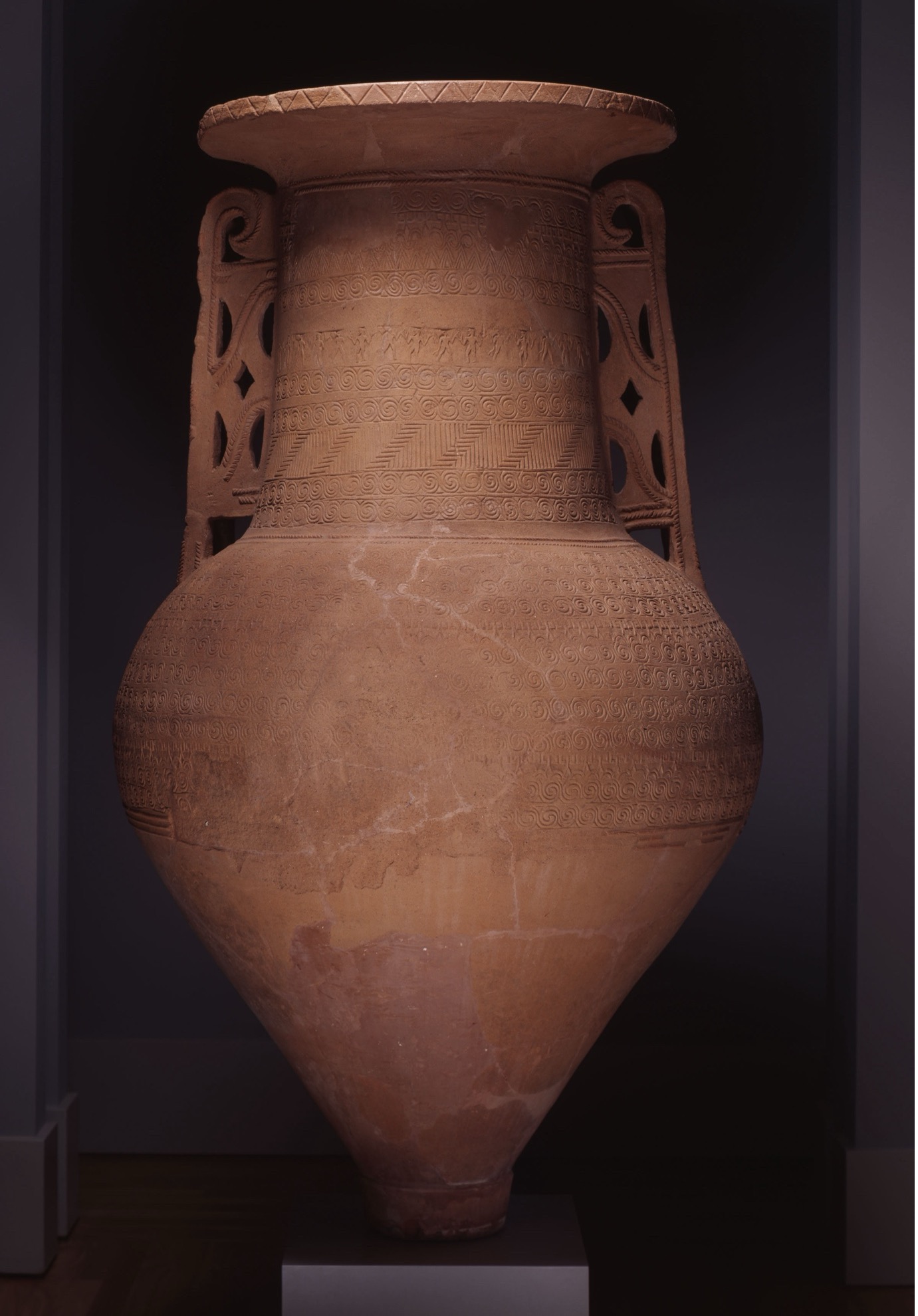
In April of 2023, Carlos Museum Director Henry Kim and I traveled to Greece to discuss all objects which the Hellenic Ministry of Culture has asked to be repatriated. It was fascinating to be able to sit down with our colleagues from the Ministry to discuss and evaluate both the objects and the evidence. One of the four objects we examined was the Pithos (2004.002.001).
Twenty years earlier, while the pithos was under purchase consideration by the Carlos Museum, our then curator of Greek and Roman art, Jasper Gaunt, was in correspondence with a man named Roland C. Ansermet of Neuchâtel, Switzerland. Ansermet explained that the pithos was formerly in the collection of his uncle, Professor Adolphe Goumaz of Lausanne, Switzerland, from 1960. After Goumaz’s death, ownership of the pithos passed to Ansermet. The dealer who was representing the pithos in the sale, Phoenix Ancient Art, also supplied the Carlos Museum with a report from the Art Loss Register stating that to their knowledge, the pithos had not been reported as stolen or missing. The provenance documentation for the pithos appeared strong for the year 2003, and the Carlos proceeded with the purchase in 2004.
Hindsight is always 20/20, so it is hard to judge the appropriateness of this acquisition according to what we knew in 2004. In the absence of further evidence, it is certainly not a purchase that would be approved by the Carlos Museum today. But the fact remains that we did purchase the pithos, and we have been caring for the object for the last 20 years. Part of that care includes researching its provenance beyond the 2003 Ansermet letter. Today we understand that letters written by previous owners are not enough to prove provenance. We are also well aware of the reputation of Phoenix Ancient Art and their relationship to Ansermet. The provenance of the pithos always left me with questions and doubts, but I never had enough evidence to disprove it.
I was understandably very eager to see what evidence the Hellenic Ministry of Culture had about the pithos and its provenance. Of course, I had seen the photo said to be from the Becchina archive that had been circulating on the internet for years. But a photo, particularly a black and white studio photo with no background, is not proof in and of itself that the pithos had been illegally excavated and/or exported from Greece. In our meeting with the Ministry, we were able to confirm the photo is from the Becchina archive. The Becchina archive is a robust collection of photographs and documents detailing the commercial activity of convicted antiquities trafficker Gianfranco Becchina. The black and white studio photo of the pithos is so different from the expected polaroids or 35mm photographs that we see so often used as evidence of antiquities trafficking, and there was no additional documentation. Most importantly, the Ministry decided to put aside their claim because they could not prove the pithos was excavated from Greece.
Both sides have agreed there is not sufficient evidence at this time to warrant the repatriation of the pithos to Greece. I still have many questions about the provenance and will continue to research it. If more evidence arises in the future, coming from work done by the Carlos Museum, the Ministry of Culture, or another source, we will be happy to revisit the conversation. The group of women we work with from the Hellenic Ministry of Culture are highly competent, knowledgeable, and passionate. They do amazing work - they know what evidence is available about illicit antiquities and what that evidence means. I trust in their understanding and expertise to say what objects should be repatriated to Greece based on the evidence available.




